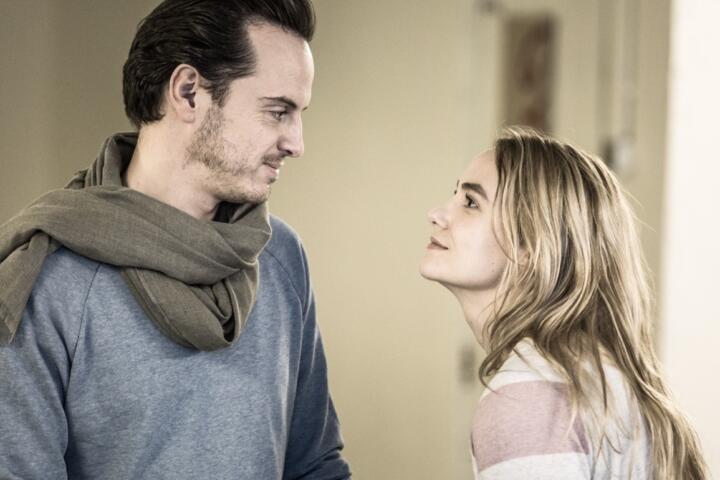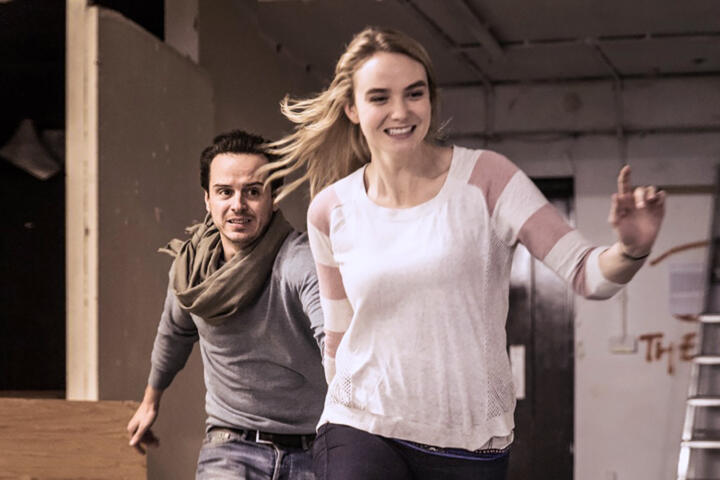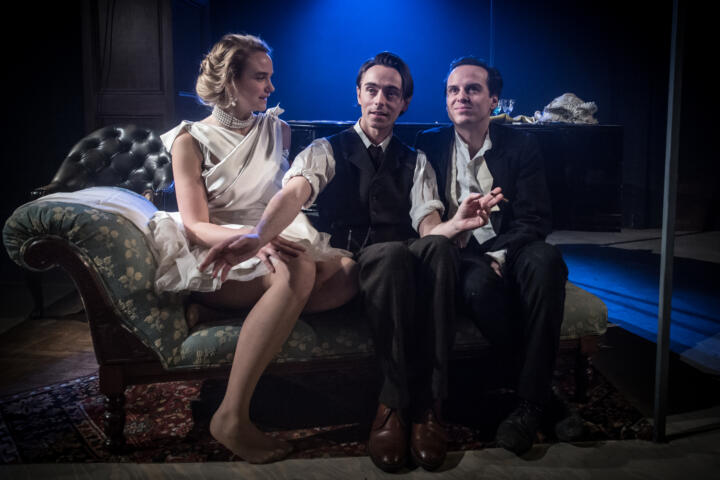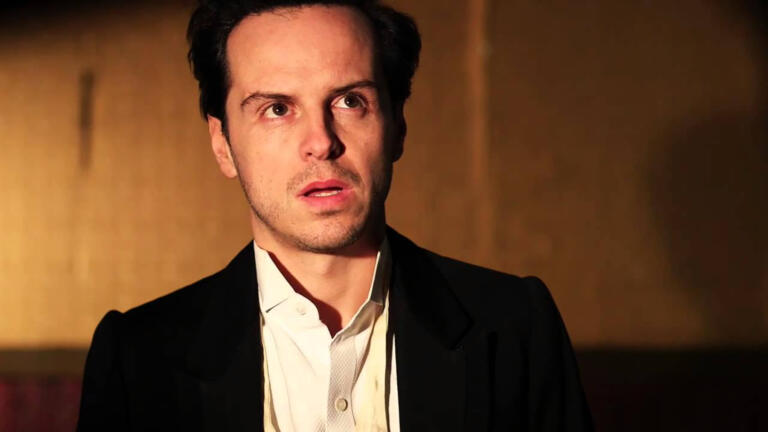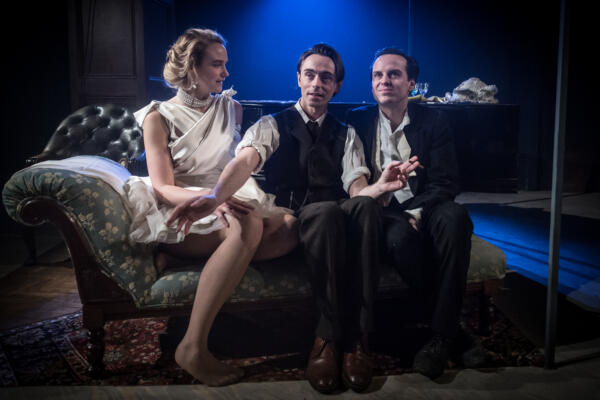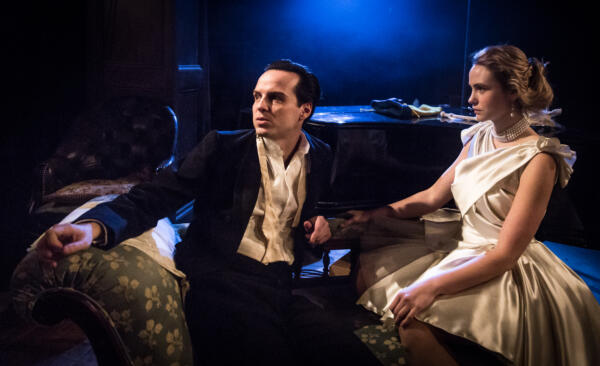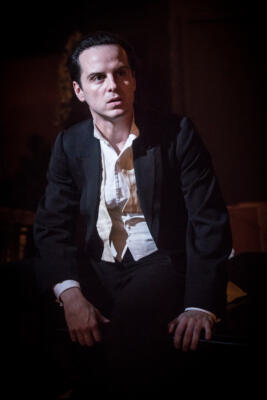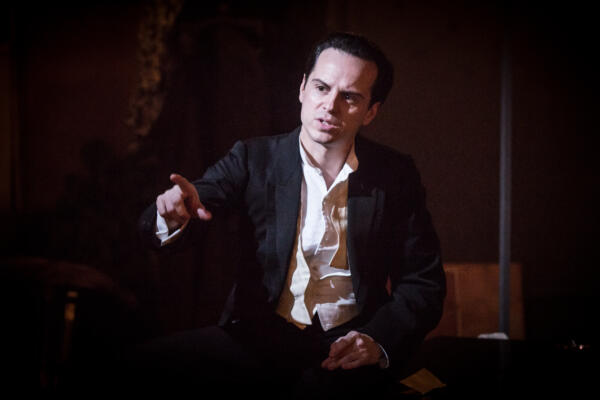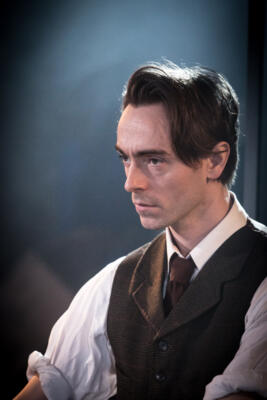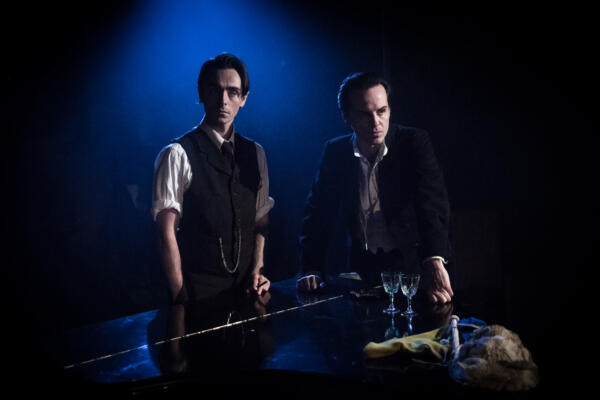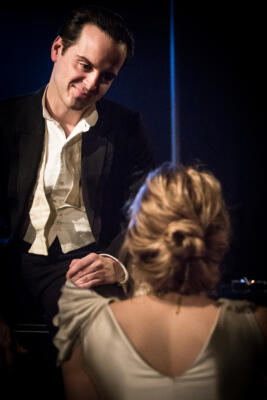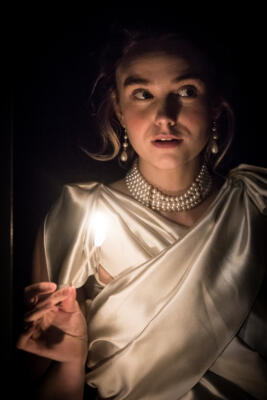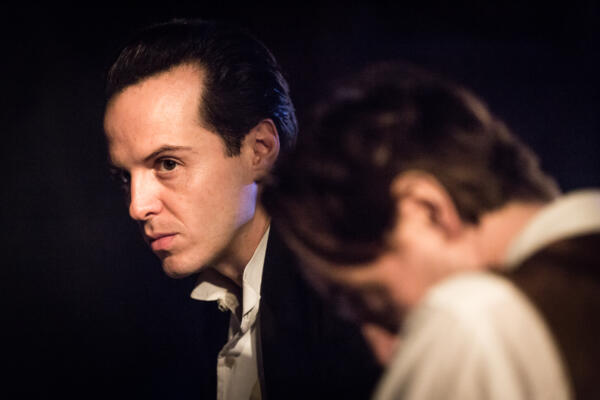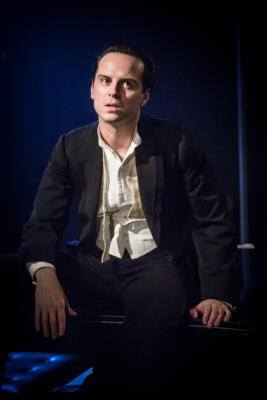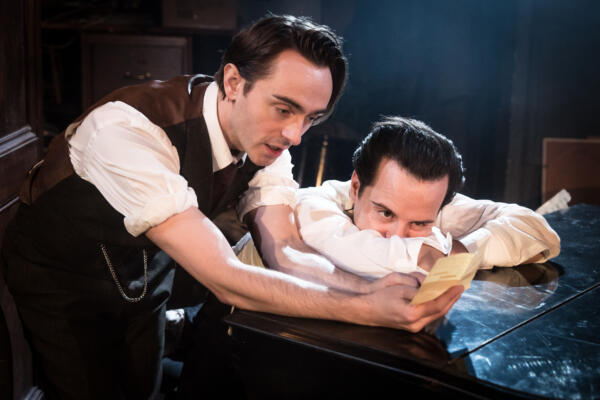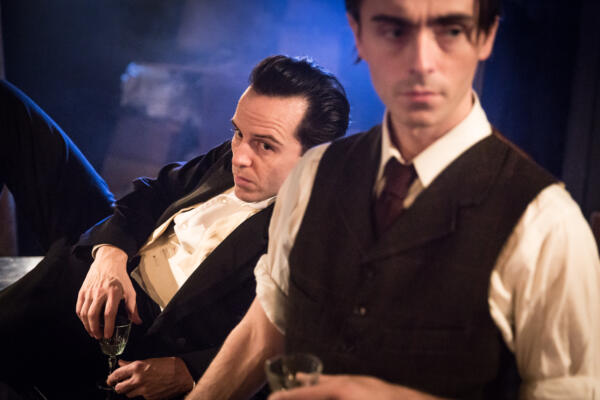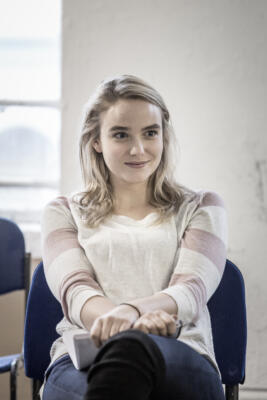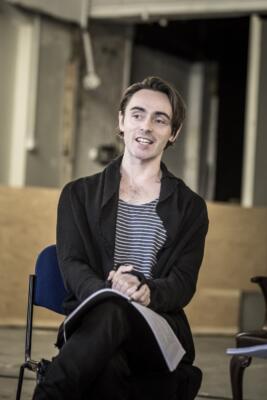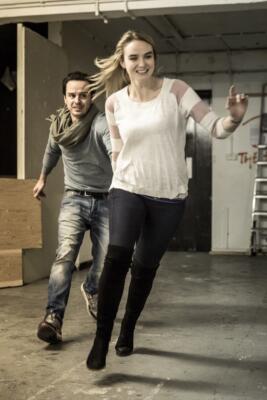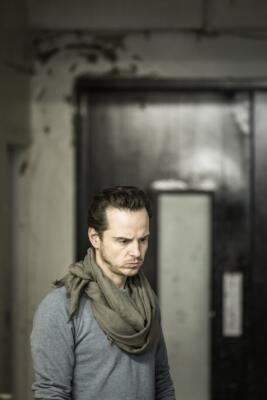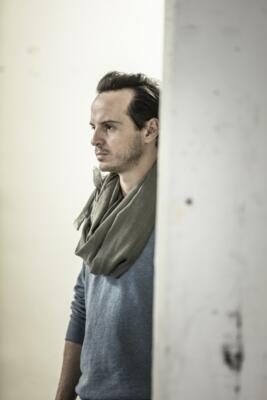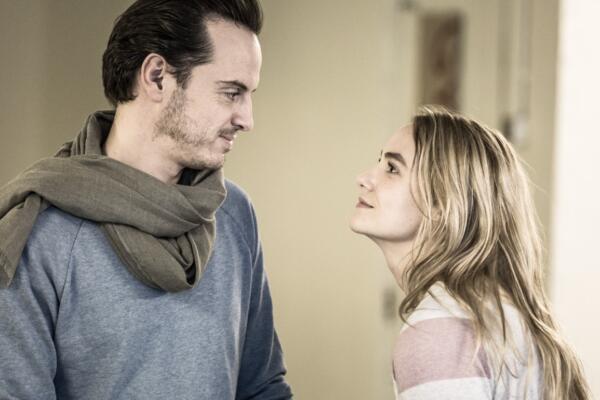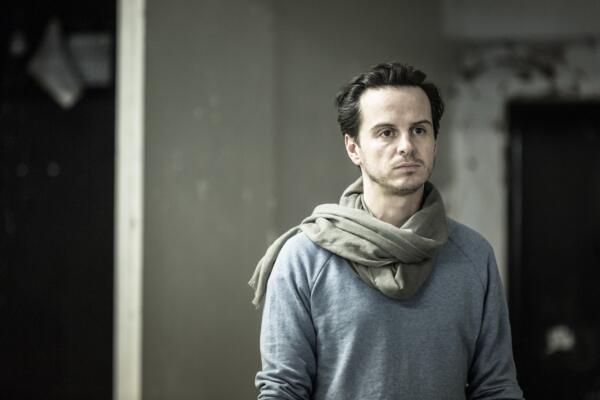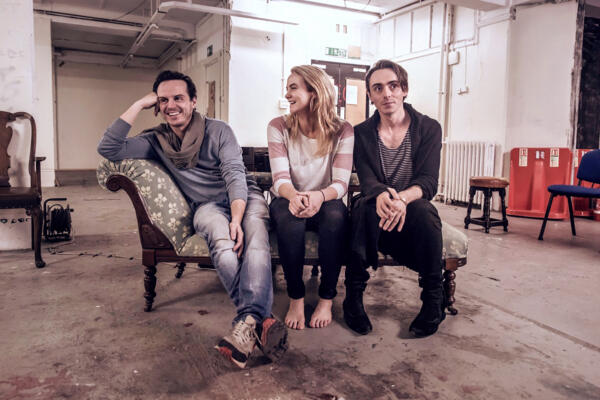The Dazzle
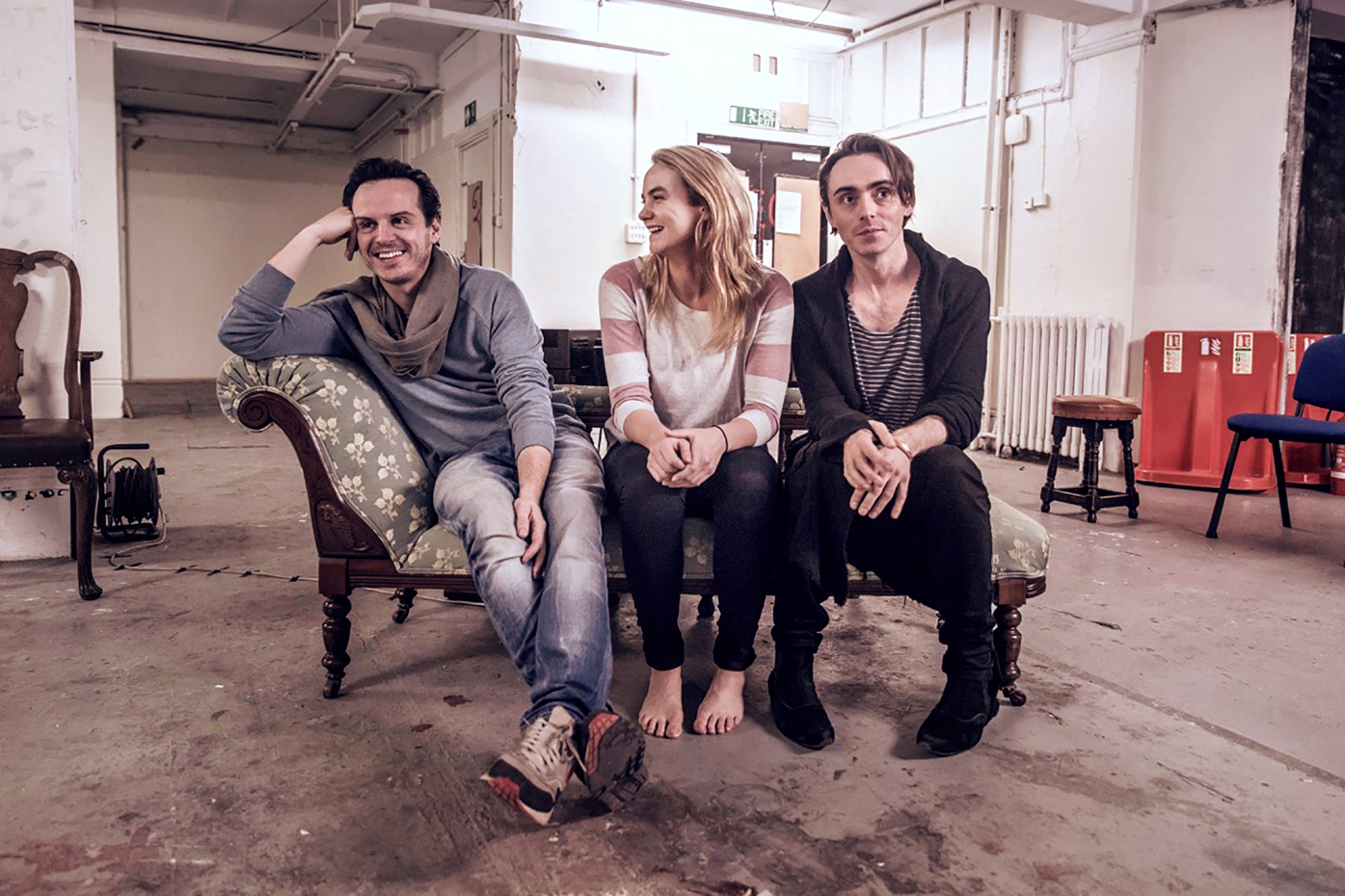
“My brother makes an epic of a molecule — what would he do with the world?”
About the work
2016
Welcome to the Michael Grandage Company and Emily Dobbs Productions’ production of The Dazzle by Richard Greenberg
New York City. The beginning of the 20th Century. Two brothers sit in their home surrounded by 136 tons of hoarded junk. When a beautiful guest arrives, everybody’s lives are thrown into sharp focus.
The UK premiere of Tony Award winner Richard Greenberg’s thrilling and fascinating play is brought to life in the once anarchic space of the former Central St Martins in Charing Cross Road and stars Andrew Scott, David Dawson and Joanna Vanderham.
“The Dazzle offered our company an exciting opportunity to collaborate with a young director and a young producer in a found space. This meant we were able to present the UK Premiere of an important American play to a young and diverse audience in a way that allowed everyone to look at the subject in a unique environment.
I am indebted to Richard Greenberg and his agent, George Lane for making this happen – their commitment to the whole endeavour meant that a generation of younger theatre makers got to define The Dazzle for the first time in London. The outcome could not have been better – it garnered five star reviews pretty much across the board, played to full houses, conjoined a virtuosic cast with a virtuosic piece of writing and even returned some money to a group of investors who were committed to supporting it for reasons beyond any financial profit.
It is wonderful that Dominic Francis has been able to produce this document to support the production. Alongside the reviews and the photographs, it offers a meaningful assessment of a moment at the end of 2015 when a great play by a great American playwright got its first production in the United Kingdom more than a decade after it was first written.”
Michael Grandage, Artistic Director, MGC
Harlem, New York City, the early 20th century.
Homer and Langley Collyer, sons of a distinguished New York family, live together in an old mansion block. Raised to be gentlemen and scholars, Homer gave up admiralty law to manage Langley’s career as a promising pianist.
But the two brothers are reclusive young men, seemingly unconcerned by the busy world around them, and they begin to live in increasing isolation from the high society into which they were born.
Enter beautifully poised socialite, Milly Ashmore, bored by her well-to-do family and completely smitten with Langley and his apparently indifferent attitude towards her. Homer is doubtful of a lasting relationship while recognising the benefits of a wealthy heiress as a potential in-law.
But what are his brother’s feelings for the outwardly confident, but inwardly fragile, young woman? Langley seems increasingly preoccupied by the minutiae of everyday life, collecting and coveting random objects from his walks around the city, which soon begin to fill every room in the house.
When marriage is proposed it seems that order will at last prevail in the brothers’ chaotic lives, but can order and convention be brought to such eccentric recluses?
| Role | Credit |
|---|---|
| Director | Simon Evans |
| Designer | Ben Stones |
| Lighting Designer | Neil Austin |
| Composer & Sound Designer | Edward Lewis |
| Movement Director | Oliver Kaderbhai |
| Production Manager | Ben Brown |
| Company Manager | Charlotte Crone |
| Stage Manager | Isabella Anderson |
| Assistant Stage Manager | Ottilie Kark |
| Head of Wardrobe | Charlotte Stidwell |
| Associate Director | Emma Butler |
| Wigs | Ray Marston Wigs |
| Hair & Make-Up | Sophie Hamedami |
| Props Sourcer | Lily Molygarrd |
| Press | Kate Morley PR |
| Production & Rehearsal Photographer | Marc Brenner |
| Voice Work | Penny Dyer |
Richard Greenberg
Richard Greenberg is the author of Our Mother’s Brief Affair, The Assembled Parties (Tony, Drama Desk nominations), Take Me Out (Tony Award for Best Play; Drama Desk Award; NY Drama Critics Circle Award; Outer Critics Circle Award; Lucille Lortel Award), The House in Town, The Violet Hour, The Dazzle (Outer Critics Circle Award), Everett Beekin, Three Days of Rain (L.A. Drama Critics Award; Pulitzer finalist), The American Plan, and many other plays.
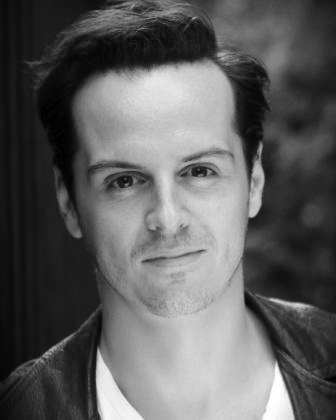
Langley Collyer (Andrew Scott)
The younger of the two Collyer brothers. A gifted musician, Langley’s burgeoning career as a concert pianist is curtailed by his equally strong disdain for the audience who crowd to see him. Overwhelmed by all the attention, he seeks solitude and solace in an inner-world largely of his own creation. This leaves Langley remote and difficult, even to those closest to him.
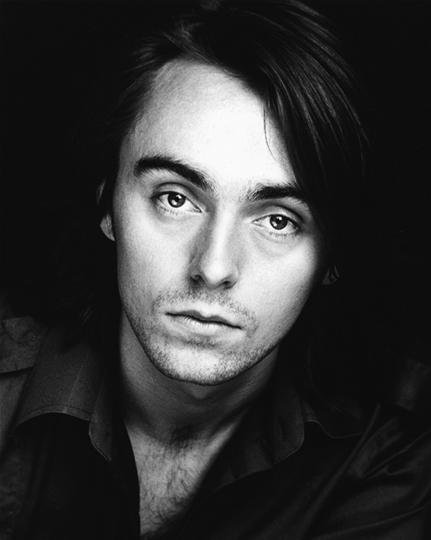
Homer Collyer (David Dawson)
Langley’s older brother who’s taken responsibility for his sibling since childhood, sacrificing his career and companionship to tend to the needs of his brother. While also estranged from family and friends, Homer needs the comfort and nourishment of the society that is his heritage but can’t re-enter this world without Langley. Perhaps the arrival of a third person will create a bridge between the two?
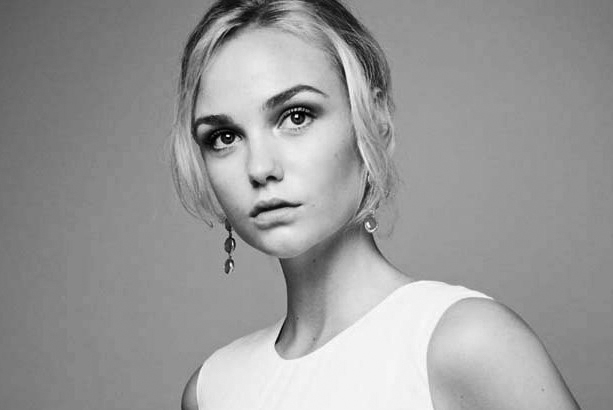
Milly Ashmore (Joanna Vanderham)
Intelligent, confident and assertive, the striking young socialite forces her way into the home and company of the two brothers. In Langley, with whom she is entranced, she believes she’s found a kindred spirit and a true cause – only she can save him from himself. But which of them really needs rescuing? Langley, Homer or the troubled young woman with secrets of her own?
The Dazzle was first produced by Roundabout Theatre Company at the Gramercy Theatre, New York City, in 2002. The original production was directed by David Warren and featured Reg Rogers as Langley Collyer, Peter Frechette as Homer Collyer and Francie Swift as Milly Ashmore.
Interviews with the cast of the 2015 London revival
Andrew Scott
http://www.timeout.com/london/theatre/andrew-scott-talks-about-his-return-to-the-small-stage
http://www.theguardian.com/culture/live/2015/nov/13/andrew-scott-webchat-the-dazzle-spectre-sherlock
Joanna Vanderham
http://www.theguardian.com/stage/2015/dec/18/the-dazzle-joanna-vanderham-interview-rsc-the-paradise
Futher Reading
The Dazzle by Richard Greenberg (Dramatists Play Service Inc., 2003). The text of the play.
Bibliography
The following books were consulted in preparation for the production of The Dazzle.
The Collyer Brothers
- Out of this World: A Collection of Hermits and Recluses by Helen Erskine (1953)
- Ghosty Men: The Strange But True Story of the Collyer Brothers, New York’s Greatest Hoarders by Franz Lidz (2003)
- Homer and Langley by EL Doctorow (2009)
Hoarding and other conditions
- Autism: A Very Short Introduction by Uta Frith (2008)
- Stuff: Compulsive Hoarding and the Meaning of Things by Randy Frost (2010)
- The Hoarding Handbook by Christriania Bratiotis, et al. (2011)
- Hoarding, Hoarders and OCD – Obesessive Compulsive Disorder Explained by Lyndsay Leatherdale (2012)
- The Man Who Couldn’t Stop: The Truth About OCD by David Adam (2014)
Harlem
- This Was Harlem: A Cultural Portrait, 1900-1950 by Jervis Anderson (1982)
- Harlem: The Four Hundred Year History from Dutch Village to Capitol of Black AmericaI by Jonathan Gill (2011)
Other
- Tim Walker: Storyteller by Tim Walker (2012)
- Mess: One Man’s Struggle to Clean Up His House and His Act by Barry Yourgrau (2015)
